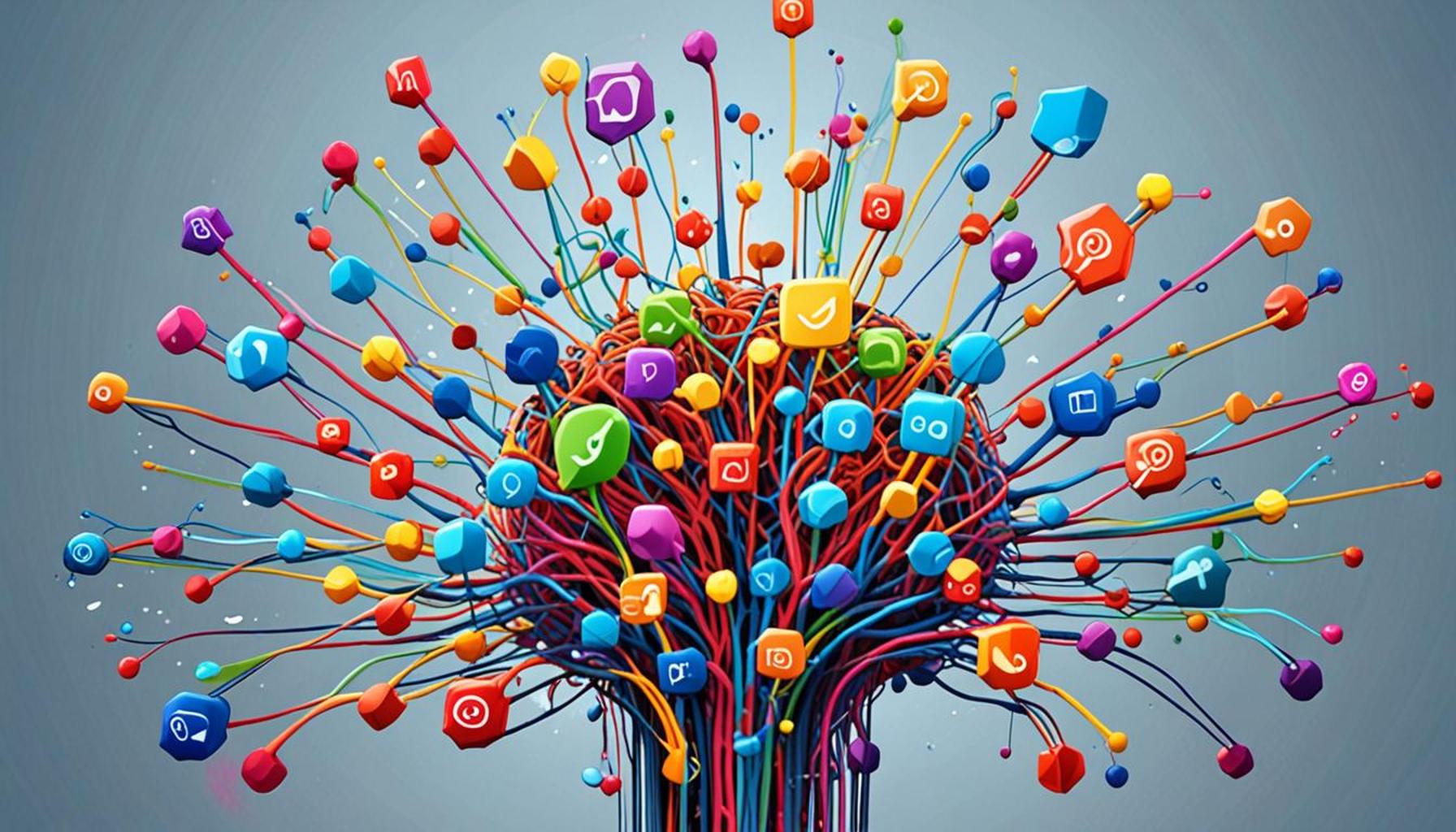The Impact of Digital Communication on Access and Awareness of Government Benefits

The Transformation of Government Benefit Access
As we navigate the intricacies of modern society, the evolution of government benefits accessibility remains a crucial discourse. Previously, accessing government services involved lengthy processes characterized by excessive paperwork and waiting times. Today, the digital landscape offers a welcome shift, transforming the way individuals engage with essential services. The proliferation of technology means that, with a simple search, citizens can uncover a wealth of information about their rights, entitlements, and available resources.
Benefits of Digital Access to Government Services
The advantages of utilizing digital platforms for government benefits are numerous and noteworthy:
- Increased Accessibility: The advent of user-friendly websites and mobile applications allows individuals to navigate various benefit programs with ease. For example, platforms like Benefits.gov serve as a comprehensive resource where users can find information on everything from unemployment insurance to food assistance in a straightforward format.
- Real-Time Updates: Through social media channels and official government websites, citizens can receive real-time updates regarding changes in programs. The use of platforms like Twitter allows agencies to quickly disseminate information about new policies or deadlines, helping individuals stay informed without delays.
- Interactive Features: Modern digital services often incorporate chatbots and online forums that enhance user interaction. For instance, the Department of Veterans Affairs has implemented chat services where veterans can directly inquire about benefits, leading to quicker resolutions and enhanced user satisfaction.
Challenges and Barriers to Digital Access
<pDespite these advantages, challenges loom large in the digital transition. It's essential to acknowledge that not all citizens enjoy the same level of access or proficiency when it comes to technology:
- Socioeconomic Status: Limited internet access is prevalent in rural and low-income urban areas. According to a report from the Pew Research Center, approximately 27% of lower-income Americans lack access to high-speed internet, impeding their ability to utilize these digital resources effectively.
- Digital Literacy: Individuals may exhibit varying levels of comfort and skill regarding digital tools. This disparity means that some may struggle to locate or understand the information necessary to take full advantage of their entitled benefits. Community outreach programs that offer digital literacy training can play a vital role in addressing this gap.
- Language Barriers: Many web platforms do not accommodate all languages or dialects, potentially alienating non-English speakers from crucial services. Efforts to include multilingual resources could greatly enhance inclusivity and accessibility.
As we explore the dual-edged nature of this digital transformation, it becomes evident that while the benefits are substantial, active steps must be taken to mitigate the challenges. By identifying and addressing the disparities in access and digital literacy, stakeholders can work toward a more equitable distribution of information regarding government benefits. This ensures that every citizen has the opportunity to engage effectively with the resources available to them, enhancing overall public welfare.
ADDITIONAL INSIGHTS: Expand your understanding here
Enhancing Reach and Efficiency in Government Communication
In the contemporary landscape, the facilitation of digital communication has reshaped how government agencies connect with citizens regarding their benefits. As a conduit for information dissemination, digital communication channels not only streamline outreach but also enhance the public’s understanding of the programs available to them. By leveraging email newsletters, social media campaigns, and targeted messaging, government entities can transcend traditional barriers, reaching diverse demographics smartly and efficiently.
The Role of Social Media in Government Benefits Awareness
Social media platforms such as Facebook, Twitter, and Instagram have emerged as vital tools for promoting awareness of government benefits. Agencies can actively engage with citizens, promoting ongoing information campaigns to highlight assistance programs like Social Security, Medicaid, and food stamps. Consider these impactful strategies:
- Engagement Through Community Building: Government social media accounts often cultivate communities where individuals can share experiences, ask questions, and assist each other in navigating complex systems. This engagement fosters a sense of belonging and support, encouraging participation among users who might otherwise feel isolated or overwhelmed.
- Targeted Advertisements: Platforms like Facebook allow for targeted advertising campaigns that reach specific groups based on demographics, interests, and location. This targeted approach means that vital information about benefits can be delivered to those who need it most, enhancing visibility and application rates.
- Visual Storytelling: Utilizing videos or infographics to simplify complicated processes is a powerful method of engagement. Short, engaging content can explain how to apply for benefits or highlight eligibility criteria, leading to better-informed citizens who are equipped to seek assistance.
The Shift Towards Online Application Processes
Furthermore, the digitization of application processes signifies a significant leap toward enhancing service delivery. Traditionally, applying for government benefits often required citizens to fill out extensive paper forms and submit them via mail, leading to potential delays and complications. Now, digital platforms enable users to apply online, reducing the processing times substantially. The benefits of this shift include:
- Efficiency in Application Processing: Online submissions allow government officials to receive, review, and approve applications more quickly, enhancing the overall efficiency of these services.
- Access to Resources Anytime, Anywhere: Citizens can now access application forms and information outside normal business hours, eliminating the need for time off work or long travel times to local offices.
- Reduced Administrative Errors: Digital forms often incorporate error-checking functionalities, which can minimize mistakes that contribute to processing delays.
While the digital transformation in government communication and benefits access offers immense potential, it also underscores the necessity for continued vigilance. Ensuring that all demographics, especially the vulnerable, are included in this digital shift remains a critical focus for policymakers. By forging a path towards universal digital literacy and user-friendly interfaces, the aim is to create equal opportunities for all citizens to access the advantages of digital communication in securing their rightful benefits.
| Category | Description |
|---|---|
| Digital Outreach | Government agencies utilize social media and websites to disseminate information swiftly, increasing reach and visibility. |
| Increased Accessibility | Digital communication channels create opportunities for the disabled and tech-savvy populations to access benefits remotely. |
| Educational Campaigns | Interactive tools, like infographics and videos, help to educate citizens on complex benefits in easily digestible formats. |
| Real-Time Updates | Through digital platforms, individuals receive immediate news regarding changes to policies or new programs available to them. |
SEE ALSO: Click here to read another article
Bridging the Gap: Accessibility Challenges and Solutions
Despite the advancements in digital communication that enhance access to government benefits, significant challenges remain that can inhibit certain populations from fully benefiting from these resources. The move to online platforms, while improving efficiency and reach, raises critical issues around accessibility that require thoughtful solutions. Understanding these obstacles is essential for ensuring that all citizens can navigate and take advantage of available assistance programs.
The Digital Divide and its Implications
One of the most pressing challenges is the digital divide, which refers to the gap between individuals who have access to modern information and communication technology and those who do not. According to the Pew Research Center, approximately 20% of Americans still lack broadband internet access at home. This divide disproportionately affects low-income households, rural residents, and communities of color, limiting their ability to access vital information about government benefits. To illustrate:
- Rural Communities: Many residents in rural areas struggle with unreliable internet connections or complete unavailability of high-speed internet. For them, following online application procedures or accessing digital resources becomes a monumental task.
- Low-Income Individuals: Families with limited financial resources may not have the technology, such as smartphones or laptops, necessary to navigate online benefit applications. This barrier effectively shuts out many from crucial assistance programs designed to support their needs.
- Older Adults: Many senior citizens may face difficulties in using digital platforms due to unfamiliarity with technology, making them less likely to seek benefits they may qualify for.
Addressing Accessibility through Innovative Solutions
Recognizing the challenges posed by the digital divide, government agencies and nonprofit organizations are deploying various strategies to improve accessibility and engagement:
- Community Resource Centers: Local organizations and government offices are establishing resource centers equipped with computers and internet access to help citizens navigate online applications. Staff members are on hand to assist individuals, ensuring they receive the guidance needed to successfully apply for benefits.
- Mobile Outreach Programs: Some agencies are utilizing mobile units to reach underserved neighborhoods. These mobile resources provide direct services such as enrolling people in benefits programs and offering tech assistance to improve digital literacy.
- Educational Workshops: Organizing workshops focused on digital literacy can empower citizens. By teaching individuals how to use online platforms for government benefits, these workshops foster independence and confidence in managing their applications.
The Importance of User-Friendly Digital Interfaces
In addition to bridging the digital divide, ensuring that government websites and applications are user-friendly is critical in improving access. Many individuals encounter frustration when navigating complex forms and poorly designed platforms. Data suggests that over 60% of users abandon online applications due to difficulties encountered while trying to complete them. To address these issues, government agencies must prioritize:
- Simplified User Experiences: By adopting straightforward designs and clear instructions, agencies can facilitate smoother navigation, allowing individuals to find necessary information intuitively.
- Multilingual Resources: Providing materials in multiple languages can widen the reach, catering to non-English speakers and ensuring equitable access to information about benefits.
- Regular Feedback Mechanisms: Gathering user feedback on the functionality of online platforms can help identify pain points, allowing for iterative improvements that enhance the overall user experience.
In summary, while digital communication has undeniably enhanced the reach and efficiency of government benefits dissemination, addressing issues of access and usability remains a critical focus. By tackling the digital divide through innovative community solutions and prioritizing user-friendly interfaces, governments can ensure that their services are accessible to all citizens, fostering greater awareness and utilization of available benefits.
RECOMMENDED: Check out this similar article
Conclusion: The Future of Access to Government Benefits in a Digital World
As we navigate an era dominated by digital communication, the impact on access to government benefits cannot be overstated. The shift towards online platforms has facilitated a broader dissemination of information, allowing many to easily access vital resources and assistance programs. However, the digital divide remains a significant barrier for many Americans, particularly low-income individuals, rural residents, and older adults, who may not have the necessary technology or skills to navigate these systems. Addressing these challenges is imperative for creating a truly inclusive environment where all citizens can benefit from government support.
To bridge this divide, successful strategies such as community resource centers, mobile outreach programs, and educational workshops are essential. These initiatives not only ameliorate accessibility issues but also aim to empower individuals with the knowledge and confidence needed to engage with digital resources. Furthermore, government agencies must commit to developing user-friendly interfaces that streamline the application process and offer real-time support, ensuring that every citizen can access critical information without facing unnecessary hurdles.
As we look to the future, it is crucial for policymakers, technology developers, and community leaders to collaborate and implement scalable solutions that not only enhance access but also raise awareness of available benefits. By fostering a more equitable digital landscape, we can ensure that all Americans are informed, supported, and able to fully participate in the benefits designed to assist them. The journey towards a digitally inclusive society is ongoing, and the role of effective communication will be paramount in shaping a future where every individual can thrive.



